12 Oct 5-Step Evidence-Based Hiring System to Recruit New Insurance Producers
As an agency owner the success of your business is directly tied to your hiring process.
Each bad hire can easily cost you $100,000 to $200,000.
However, good producers can add $1 million of annual revenue to the agency (which nets most owners around $150,000 to $250,000 in profit).
There’s clearly a lot of money to be gained — or lost — in your hiring process. Not only that, but good producer hiring practices can solve some of your most pressing problems.
The reality is, most agencies still use an old arcane hiring process that causes them to make costly hiring mistakes. This old way of hiring doesn’t work, because it relies on opinions and unscientific methods. It’s the approach that says: “He seems like a good guy. Let’s give him a shot!”
It should be no surprise that agencies who operate like this have a failure rate of over 50% for new producer hires.
The good news is, there is a proven hiring method that works: It’s known as the Evidence Based Hiring System. It’s a formula that, when done properly, will help reduce your 50% failure rate down to 20% or less.
In other words, you’ll start hiring the right people 8 out of 10 times versus 4 out of 10.
The Evidence Based Hiring System consists of five steps: A pre-employment assessment followed by four structured interviews. These interviews are carefully designed to accomplish very specific objectives to help you weed out people who will never become Million Dollar Producers.
I’ve written an entire book about this hiring system, titled: GRIT: Find, Hire, Develop Real Producers, and in this article, I want to summarize some of the main points.
However, before we dive into that, let’s take a look at a real-life example of what happened to one agency after they adopted this Evidence Based Hiring System.
From $4 Million to $140 Million
A while back I had the opportunity to help an agency in Fort Worth, Texas implement the hiring system I just mentioned. At the time they were struggling to find, and hire, good producers and admitted their hiring process was not effective.
Over half the time they’d hire someone and end up firing him or her six months later, so they realized they needed help.
I trained the agency owner and the management team on the Evidence Based Hiring System and they faithfully started using this system to find and hire new producers. The results?
In the first 10 years after adopting this method the agency hired 34 new producers and 29 of them made it. Those 29 produced $17.5 million of annual renewable revenue. And 13 are Million Dollar Producers today.
In that same 10-year period the agency grew from $4 million to $30 million in revenue, mostly organic. Over the next 10 years they went from $30 million to $140 million in revenue. And even though they have become the acquirer, they still maintain that same organic growth culture and still use the Evidence Based Hiring System.
And that’s just one of hundreds of stories I have about the transformative power of adopting this hiring system. So now let’s get into the step-by-step process of how this works.
The 5-Step Evidence Based Hiring System
Choose Good Cop/Bad Cop Roles
To properly execute this hiring system you’ll need at least two people: A good cop and a bad cop.
The good cop’s role is to find and recruit producers into the system. They should be able to tell your agency’s success stories in a way that gets your candidate drooling to get in. They say things like, “I’d hire you on the spot if I could, but I can’t. We have a process and I’d like to get you in it.”
The bad cop has one purpose: To discover the truth about whether this person can be a Million Dollar Producer or not. They will be the one doing the interviews (interrogation), assigning homework and everything else in their power to determine the truth about the candidate.
They say things like, “My role is to keep you out. This is a great firm and while you may be a great salesperson, we don't want someone coming in and screwing up our culture. Here’s the criteria I use in my selection process…”
Once you have decided who will play each role, you’re ready to proceed.
Step 1: Pre-Interview Assessment:
Before you invest your time into doing the four interviews, you’ll want to screen potential producers with a good pre-employment assessment. I recommend the GRIT Personality Inventory, because it's focused solely on sales people. The assessment helps determine if they have ‘fire in the belly.’ However, no matter how good the assessment is, there are some things you can only discover in the interview process.
Step 2: Book Summary Interview:
One of the first homework assignments you’ll give the potential hire is reading the book, The Wedge; How to Stop Selling and Start Winning and then writing an Executive Summary of it. There are five reasons to do this:
1. Follow through:
This will help determine if they can follow through with an assignment in a timely manner (make sure not to assign a deadline). If not, it’s a bad sign of what they would be like if you hired them.
2. Comprehension:
You want to know if they understand the concept ‘Someone has to lose for you to win.’ There is an incumbent, they have the relationship. This can't be just a ‘nice guy’ or ‘better price’ contest. Either of those and you'll get rolled. If they understand that, they are good. If not, you have to find out why not? Did they not read it? Does it not make sense to them?
3. Synthesis:
Synthesis is defined as, “Combining elements of separate materials into a single or whole unified entity.” You want them to synthesize ideas to form a theory or system. You want to see if they can take the new information they’ve learned in The Wedge and apply it to some other parts of their lives. For example, they might have had a situation in the past where there was an incumbent. It could have been a prospect or even a boyfriend/girlfriend. You want them thinking about proactive services in a new way.
4. Intelligence:
Being able to comprehend, then transform the information into something usable, is a sign of intelligence. You want to know you have an intelligent person that learns quickly and can adapt to the situation. And you want someone who can take in a lot of information and clearly summarize what they learned in writing. Writing is a form of intelligence; it is a black and white representation of how they think.
5. Pre-indoctrination to this way of selling:
As a secondary benefit, you've already started indoctrinating your new producer into The Wedge selling techniques. If you do end up hiring this candidate and you adopt The Wedge selling process as your primary way of training, you are two steps ahead. You now share a common vocabulary to carry you through the rest of the interview process.
Step 3: The Book Review Interview:
In this interview you’ll review the Executive Summary of The Wedge with your candidate with the preceding five points in mind. You’ll read what they wrote and ask them questions to discover their level of understanding and to determine if they can defend what they wrote. Out of the whole book, why did they include what they did? More importantly, why did they leave out what they left out? Doing this book summary interview will give you valuable insight into how this person thinks.
At the end of this interview give them their second assignment. Start out by asking, “If you got this job, what would you have to sell and how would you sell it?”
Then tell them, “That’s what I want you to find out.” Then have them interview some of your producers.
Step 4: Differentiation & Goals Interview:
In this interview ask them what they found out during the homework activity and how they would sell themselves and the agency to prospects. In most cases, they’ll give the typical answers: Our people, our markets, our reputation, etc. That’s when you ask: “Do you think the other agencies you’d be competing against also have these things?” They’ll say, “Yes.” That’s when you ask them to go back and find real concrete differentiators they could use.
In the second part of this interview you also want to ask them about their personal goals. You’ll ask about their current personal income and explain how many accounts, and what size, they’d need to write to make that much money at your agency. Then you can start forecasting potential income levels based on how much business they write. Remember, you’re looking for people who can become Million Dollar Producers; if they don’t have the drive to make $250,000 to $300,000 a year, they probably aren’t motivated enough.
At the end of this interview you’ll ask them to develop a prospect list to see, first of all, if they have a natural market. Do they already have relationships with business owners that match up with the kinds of accounts you can write? If not, they will be starting from scratch; that’s not all bad, it’s just risky.
Step 5: Final Interview:
In this fourth and final interview you will review their outstanding homework assignments. Start with the Differentiation List, then review their Prospect List. End by reviewing their income goals again. This is the time to dig in deep. Connect each goal to their family when possible. You want to understand what drives their desire to make money. If you don’t find out what drives them, you are missing a golden opportunity to validate your decision; and a bigger opportunity to leverage their desires once hired.
Decision Time!
If all goes well after you finish the interview process, your agency is ready to make an offer.
If it doesn’t go well, and you are not certain about hiring them, you have two choices:
1. You can be candid with them and tell them your reservations about hiring them. Thank them for all their hard work and tell them this doesn’t appear to be the right fit.
2. Make up an excuse for why you can’t hire them now and postpone the decision to the future.
That’s up to you.
If you do decide to make an offer, confirm everything you feel you have discovered: Are they driven, resilient, can they deal with rejection, are they good at relationships, are they smart, are they coachable? If they have come this far, I promise you, they want this job. So, don’t give away the farm, but don’t be cheap. Offer a salary that is just enough to get by, but not much more. And, if they start negotiating too hard with you, help them to the door in a polite way.
* * *
Hopefully you can see how this process can help you double the success rate of new producer hires. It can help you find and hire more Million Dollar Producers and ultimately totally transform your agency.
Remember, as an agency owner, the success of your business is directly tied to your hiring process. I hope this summary of the Evidence Based Hiring System was helpful. To continue improving your hiring skills, I recommend you grab a copy of my book, GRIT: Find, Hire, Develop Real Producers.
There’s an entire 46-page chapter dedicated to the Evidence Based Hiring System. You’ll also learn why you should look for talented people not ‘good producers’ and how to develop Million Dollar Producers once you hire them (you’ll learn the top 5 money-making activities).
—
Growth Simplified™
Randy Schwantz, CEO/Founder
GET AN EXCLUSIVE PREVIEW OF BIGNITION
Take a sneak peek at the only program with sales training, executive coaching, and a powerful CRM designed to take insurance agencies from “mediocre” to an “Agency Growth Machine.”
Hiring new Producers?
Check out these Resources
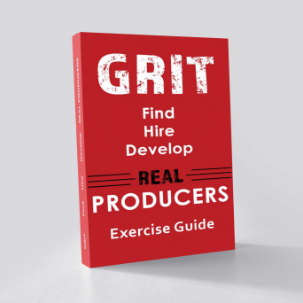
GRIT: Find, Hire, & Develop REAL Producers
Dig into the psyche of a REAL Producer and how you can determine that before you make the commitment, not after, spending $100,000s of lost producer payroll and overhead expenses.
If you want a proven playbook to Find, Hire, and Develop REAL Producers – this book is your solution.
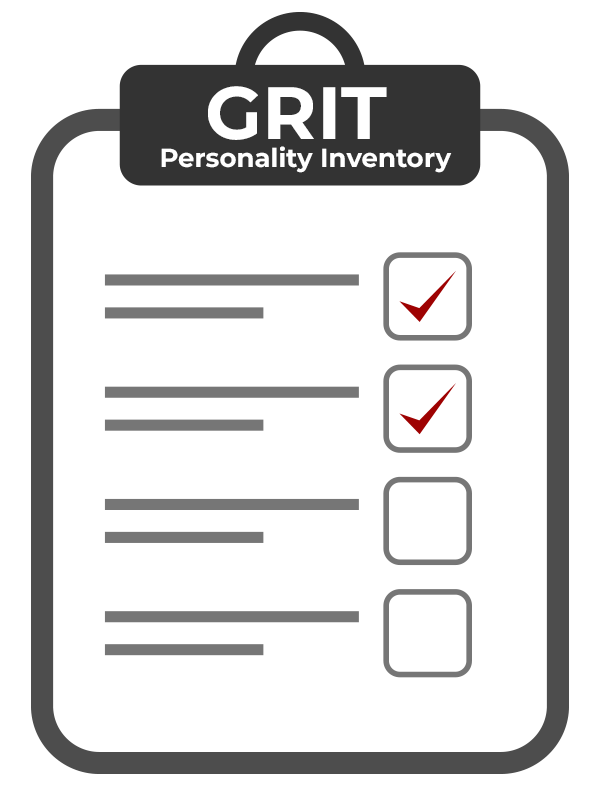
GRIT Personality Inventory Assessment
New Producer hiring mistakes will cost $50,000 – $200,000. It’s not only horrible on your bottom line, it kills your opportunity to grow your agency.
Mistakes can be eliminated, but to do so you need a profile that is not easy to game. The problem with most profiles is that producers have seen them before. They know how to answer the questions to get acceptable scores. That stops now with the GRIT Personality Inventory.
How are other agency owners hiring & Developing new producers?
Watch the testimonials below:
Are you an Agency Owner with 4-10+ Producers?
(And need a system to train & develop them?)
-
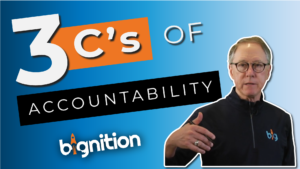
Insurance Agent Accountability: How to Hold Your Producers More Accountable
-
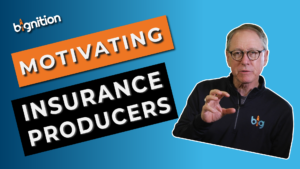
Simple Motivation Formula for Insurance Producers
-
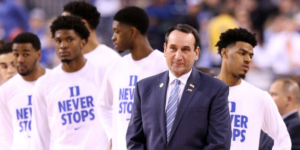
Recruiting Insurance Brokers: Finding Top Talent Like Coach K
-
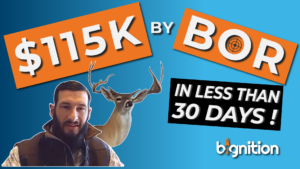
How this Agency Wrote $115K by BORs in 30 days (With Jared Pitts)
-

The Need for a New Producer School (With Scott Knowles)




No Comments